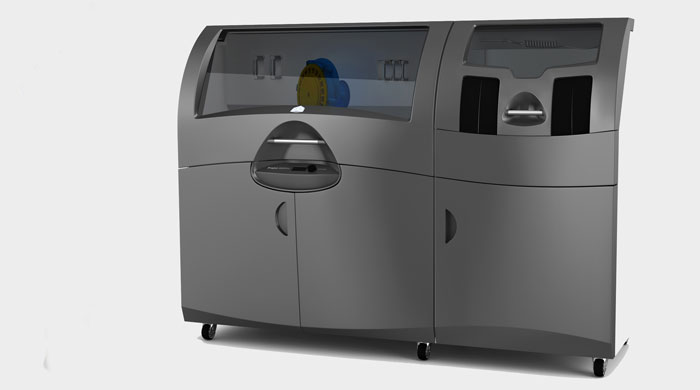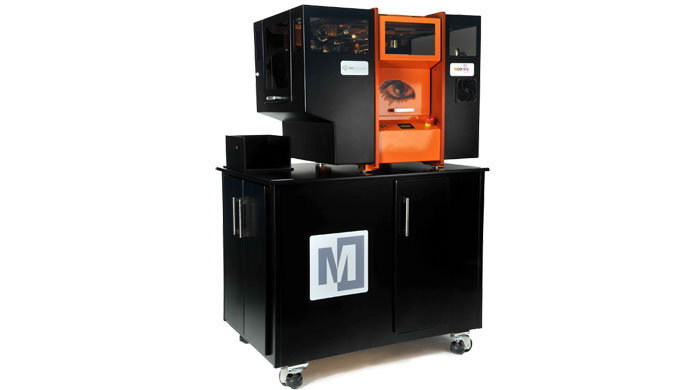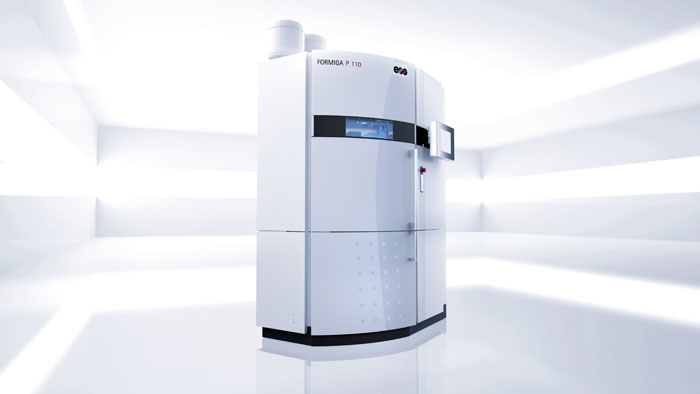With prices continuing to fall 3D printers are now within reach of many AEC firms. Materials, build volumes and cost all vary greatly; here we give you four of the best for architectural models – from quick concepts to presentation models.
MakerBot Replicator
- Good for: Small concept models
- Tech: Fused Deposition Modelling (FDM)
- Colour: Single colour plastic filament
- Part strength: ••••
- Office friendly: •
- Speed per model (av) ••
- Cost per model (av) ££££
- Price: $2,899
- Build Envelope: 252 x 199 x 150mm
- Website: makerbot.com
The MakerBot Replicator (5th Gen) is an entry-level desktop 3D printer that makes durable models out of plastic. Its small form factor and cheap materials make it suitable for small scale concept modelling.
This latest addition to the Replicator family offers a slightly bigger build size (10 per cent bigger than the Replicator 2) combined with a ‘smart’ extruder head that detects when the plastic filament is running out and pauses the print and assists with platform levelling.
Connectivity is also expanded, now with WiFi, USB cable, Ethernet as well as a USB stick, making it even more desktop friendly.

3D Systems ProJet 660
- Good for: Fast, full colour concept models
- Tech: Powder-based inkjet
- Colour: Full colour
- Part strength: ••
- Office friendly: ••
- Speed per model (av) •••••
- Cost per model (av) ££
- Price: On application
- Build Envelope: 254 x 381 x 203 mm
- Website: 3dsystems.com
Delivering colour models fast, the ProJet 660 and its siblings are the aces in the pack for delivering bright architectural concepts — though models are relatively fragile compared to other 3D print technologies.
Entire bureaux have set up using these machines to feed the need for quick turnaround test models and presentation pieces, but the machines can also be used in house.
The biggest issue is the powder from which models are made. The machines come with a built in clean-up booth, but a separate room is recommended to stop dust from creeping everywhere.

MCOR Iris
- Good for: Contoured GIS maps, colour concepts
- Tech: Layered A4 paper
- Colour: Photorealistic colour
- Part strength: •••
- Office friendly: ••••
- Speed per model (av) •
- Cost per model (av) £
- Price: £30,600
- Build Envelope: 950 x 700 x 800 mm
- Website: mcortechnologies.com
Models from the Mcor Iris are made out of standard office paper (A4 or US letter). It uses a two-stage process: individual sheets are first printed in colour – and then loaded into the machine.
Each sheet is positioned with remarkable accuracy and its profile is cut, along with scoring to assist with break out of the model. Each layer is then bonded to the one below.
The hi-res detail and accurate colouring of standard paper printing makes it ideal for mapping / terrain models or building concepts. Models are big and durable and strong as they are made out of paper laminate.

EOS Formiga P110
- Good for: Detailed presentation models
- Tech: Laser sintered plastic
- Colour: Monochrome
- Part strength: ••••
- Office friendly: •
- Speed per model (av) ••
- Cost per model (av) ££££
- Price: €146,000
- Build Envelope: 200 x 250 x 330 mm
- Website: eos.info
If you’ve ordered a top quality display model from a 3D printing service provider in the last few years, the chances are it was built using one of the larger EOS machines.
The giant machines in large 3D printing bureaux are definitely not for the office use due to their size, but the entry level Formiga P110 is much more compact, and produces models of a similarly high resolution.
The surface quality is good and the plastic parts are strong. Its Polyamide build material (Nylon to you and me) is the staple for clean, white models that can also be painted to requirement.






